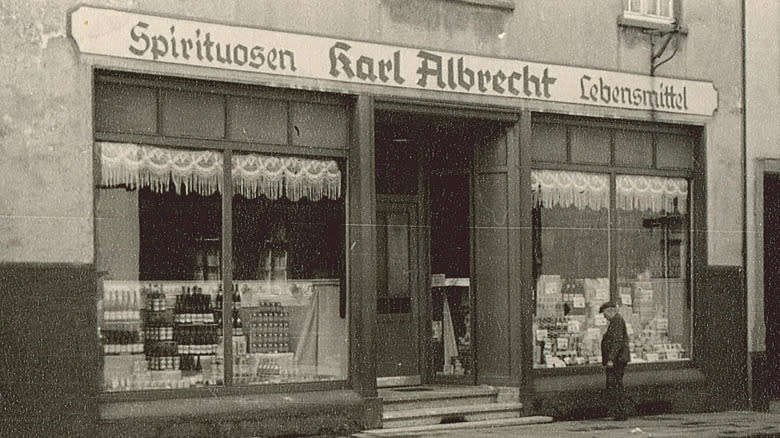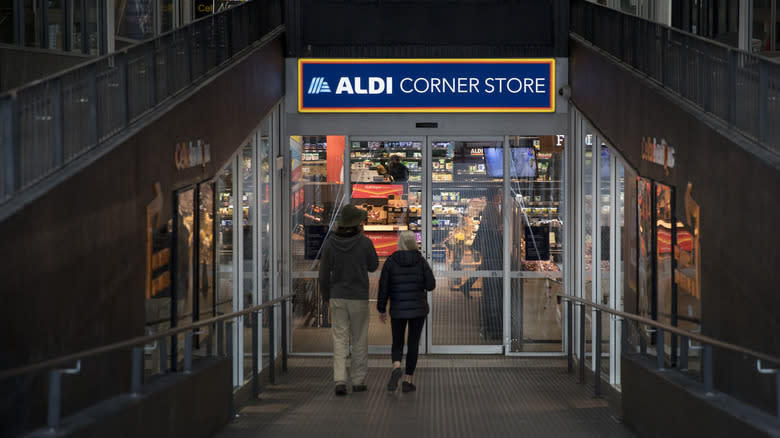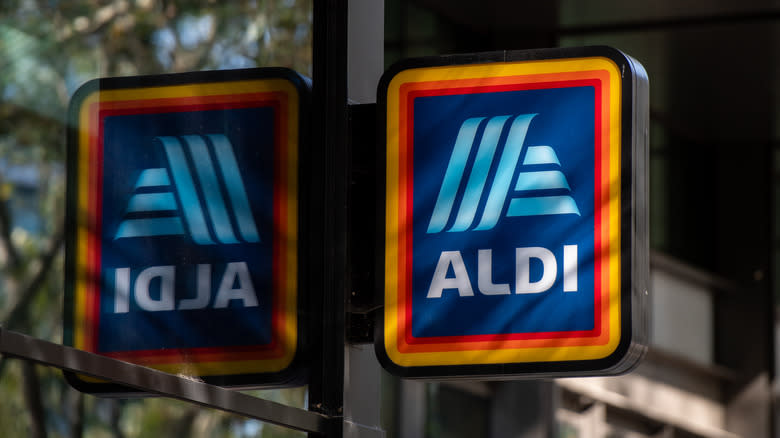Aldi's First Location Was A Quaint Little Corner Store

Aldi is a multinational corporation with sales in the billions — but it didn't start out that way. The location that started it all was a small liquor and grocery store in a low-income suburb of Essen, Germany. It would take over one hundred years, a family feud, and some radical business decisions to make Aldi the massive chain it is today.
Before all of that, in 1913, Karl and Anna Albrecht opened a corner shop: Karl Albrecht Spiritousen and Lebensmittel (translation: Liquor and groceries). Their sons, Theo and Karl Jr., helped out around the store — at 14, [ED NOTE: discussion of childhood on the second page] little Karl would even go around the neighborhood, chasing down customers with outstanding bills. The business was successful, but competition from bigger chains ate into its profits.
After World War II, Karl and Theo Albrecht returned from combat (yep, both were drafted by the Nazis) to find much of their neighborhood destroyed. But their mother's corner shop was still standing. They took over and built the grocery empire we know — and shop at — today.
Read more: 13 Canned Foods You Should Avoid At The Grocery Store
How Karl And Theo Albrecht Built – And Split – The Aldi Empire

Karl and Theo Albrecht quickly found success in the grocery business. By 1948, they had launched four Albrecht grocery stores; by 1955, they had expanded to more than 100; by 1960, they were running 300. The 1960s were also the decade that they rebranded as Aldi, short for Albrecht Diskont.
They had earned the name. According to CNBC, Aldi groceries were often 20% cheaper than the other guys'. The brothers achieved those low prices with ruthless efficiency. They kept store furnishings minimal. They cut the grocery range to 350 items, eliminating anything too expensive. They didn't even give branch managers a phone. If anyone wanted to place a call, they had to find a pay phone.
The brothers' productive business relationship didn't last. After a disagreement about whether the chain should sell cigarettes, they split the business in half. That's why Aldi has an equator: Theo took on Aldi Nord, Karl Aldi Sud. If you live in America, you've probably visited both without knowing it. Aldi Sud runs Aldi in the States, while Aldi Nord owns Trader Joe's.
Aldi's No-Frills Legacy Lives On

It has been almost a century since the Albrecht brothers began selling cheap essentials in the aftermath of a world war. But the business model is going strong. Aldi still manages to sell high-quality food at bargain-bin prices. How?
Some of the reasons go all the way back to the early days. Aldi still keeps its stores spartan. If items can be displayed in their shipping crates, they will be — no need for expensive shelving displays. The product range also remains minimal. Aldi sells about 1,700 items in-store; a Walmart Supercenter sells 120,000.
Some things have changed. It's hard to imagine Anna Albrecht stocking vegan or gluten-free food substitutes in 1913. It probably wouldn't have occurred to her to ban artificial food dyes or partially hydrogenated oils. But she probably would have appreciated the no-frills approach that helped Aldi take over the US market — and beyond.
Read the original article on Daily Meal.

